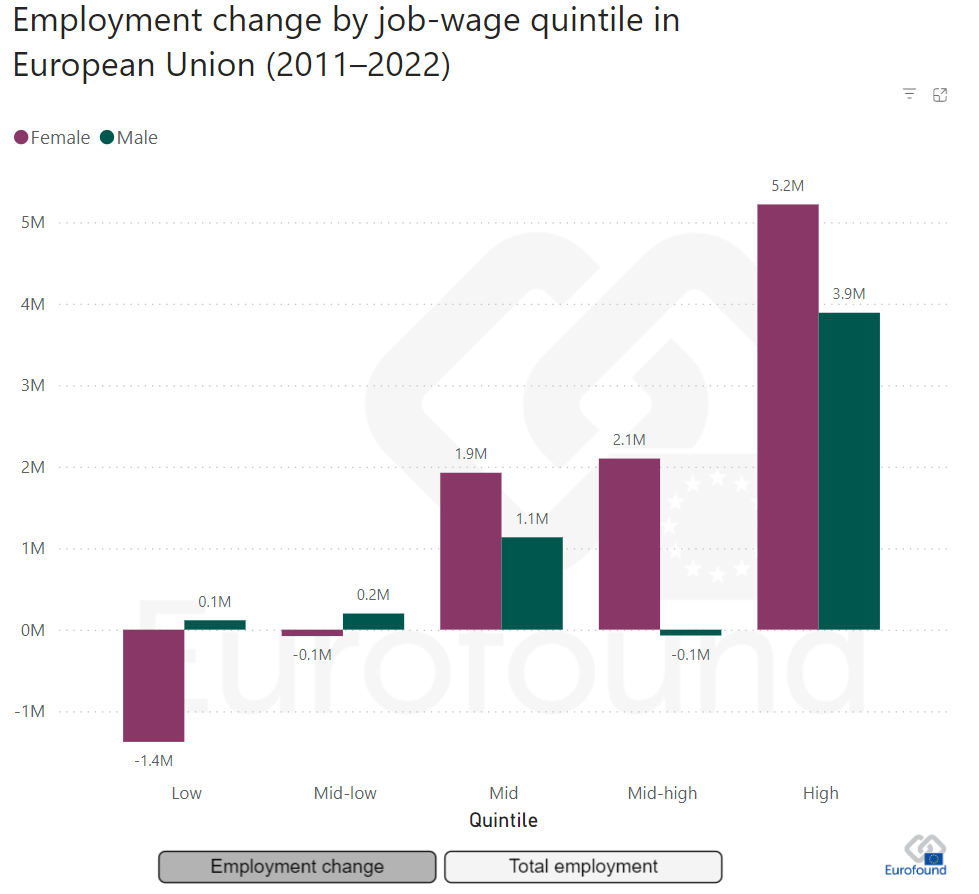European Jobs Monitor
The European Jobs Monitor (EJM) tracks structural change in European labour markets. It analyses shifts in the employment structure in the EU in terms of occupation and sector and gives a qualitative assessment of these shifts using various proxies of job quality – wages, skill levels, etc. Is employment growing relatively fastest in well-paid, mid-paid or high-paid jobs? The EJM covers all 27 EU Member States and is based primarily on analysis of the European Union Labour Force Survey (EU-LFS) data. In June 2024, the EJM interactive dataset was updated to include the most recent annual EU-LFS data up to 2022 for all Member States, as well as for the EU27 as a whole.
